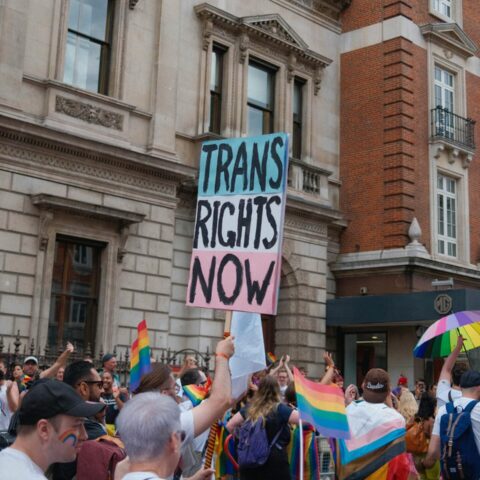What You Should Know About The Forced or Involuntary Sterilization Compensation Program (FISCP)
The eugenics movement began during the early 20th century and operated under the white supremacist belief that “social ills” ― Blackness, neurodivergence, immigration, to name a few―could be eradicated through “racial improvement.” Since the eugenics movement of the early 1900s, the state of California has been accused of facilitating forced sterilizations. Sterilization served as one of the primary ways that eugenics was put into practice and Californians were stripped of their right to bodily autonomy.
While the exact number of forced sterilization cases in California is unknown, the best estimation is tens of thousands. There have been multiple waves of compulsory sterilization throughout the 21st century. Although by 1979 forced sterilizations laws were repealed in California for state hospitals, approximately 20,000 people had already received sterilizations without their consent. An article published in 2013 reports that from 2006-2010 at least 148 unauthorized tubal ligations were performed on women detained in the California Department of Corrections and Rehabilitation. Only in 2010 were eugenics laws in California repealed for state prisons.
The Los Angeles Times reports that most of the folks violated are Black, Indigenous, or Latinx, and were sterilized by way of ovary removal, tubal ligations, and hysterectomies. Free and informed consent was never granted during these procedures. In fact, “consent” on paper appeared as information written in one’s non-native language, a shaky signature given under anesthesia, or even an agreement to one procedure, such as a biopsy, only to find out after surgery that another procedure was performed.
Released in 2020, Belly of the Beast is a powerful documentary that shares the stories of female inmates who were sterilized in California prisons, honing in on the experience of Kelli Dillon ─ former inmate and now violence prevention activist ─ in fighting for her reproductive justice against the Department of Corrections. For individuals who did not or do not have the resources to challenge state prisons directly, there is another way they may receive some justice for such a horrific assault: The Forced or Involuntary Sterilization Compensation Program (FISCP).
FISCP, orchestrated by the California Victim Compensation Board (CalVCB), was announced at the end of 2021 and implemented January 1, 2022. The program promises to divide $4.5 million (roughly $25,000 per victim) among those who were wrongfully sterilized under the state’s care. CalVCB states on their website that monetary compensation may be granted in two payments, the second payment only to be sent if there are remaining funds in the budget by March 31, 2024.
California is recognized as administering the most sterilizations in the U.S. within the last century. California’s history of forced sterilizations is not only a clear violation of reproductive justice and bodily autonomy, but also of public welfare. It is the responsibility of the state government to protect its constituents, and it is the responsibility of the federal government to protect its people.
California failed some of its most marginalized communities pre and post eugenics movement, but has pledged to at least begin the process of transitional justice. On the program’s launch, California’s Governor Gavin Newsom voiced, “California is committed to confronting this dark chapter in the state’s past and addressing the impacts of this shameful history still being felt by Californians today. While we can never fully make amends for what they’ve endured, the state will do all it can to ensure survivors of wrongful sterilization receive compensation.”
Unlike the trauma that those sterilized experienced, this program is short-lived. Individuals are only able to apply through December 31, 2023. There are a number of forms to be completed with the application, including a Sterilization Statement, an Authorized Representative Designation Letter, a Beneficiary and Trust Designation Form and a Contact Information Change Form, all available in both English and Spanish. CalVCB also requires documentation that proves these individuals were forcibly sterilized by a state institution, such as surgical consent forms or court records. With only a year to gather and report this data, however, this one program cannot possibly provide reproductive justice for every single one of these living victims. One year of compensation cannot undo the damage done over decades, but it is certainly a start.
Favorite writer: bell hooks Hidden talent: Pole dance/fitness for 2.5 years 🙂 Bio: Makenna is a Sociology masters student at American University, who graduated with …
More By This Author


